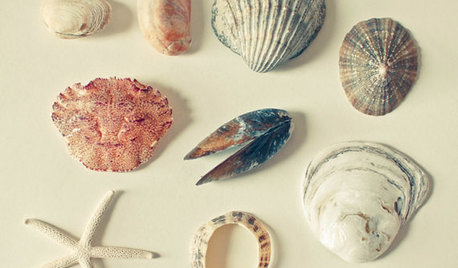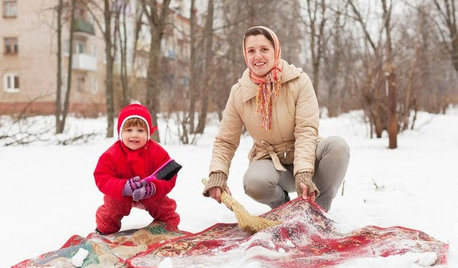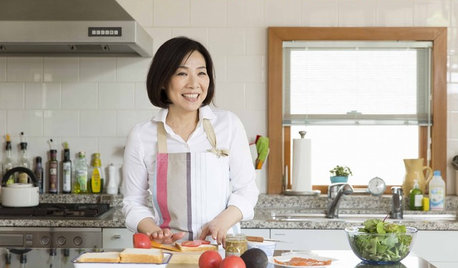Potassium from Fruit Skins
enoughcliches
17 years ago
Related Stories

FARM YOUR YARDIf You Have Room for Only One Fruit Tree ...
Juice up a small garden with one of these easier-care or worth-the-effort fruit trees for a mild climate
Full Story
MOST POPULARHow to Get Rid of Those Pesky Summer Fruit Flies
Learn what fruit flies are, how to prevent them and how to get rid of them in your home
Full Story
GARDENING GUIDESGreat Design Plant: Grow Blueberries for Their Fruit and More
Eastern gardeners should consider growing blueberry plants for their delicious fruits, bee-friendly spring blooms and brilliant fall foliage
Full Story
HEALTHY HOME6 Tips From a Nearly Zero-Waste Home
Lower your trash output and increase your quality of life with these ideas from a mom who did it to the max
Full Story
KITCHEN DESIGN16 Practical Ideas to Borrow From Professional Kitchens
Restaurant kitchens are designed to function efficiently and safely. Why not adopt some of their tricks in your own home?
Full Story
DECORATING GUIDESNature’s Color Wisdom: Lessons on Pink From the Great Outdoors
Leave your assumptions about pink at the princess playhouse door. Head outside instead for shades from shocking to subtle
Full Story
PETSGarden Alert: 22 Plants to Keep Away From Pets
Avoid potential danger by keeping dogs and cats away from these landscaping and houseplant favorites
Full Story
HOMES AROUND THE WORLDHousehold Habits and Customs to Borrow From Other Countries
Discover why salt may be the perfect house-warming gift, how to clean rugs in snow and why you should invest in a pair of ‘toilet slippers’
Full Story
KITCHEN DESIGNWorld of Design: Favorite Recipes From Food Lovers Around the Globe
Travel with your tastebuds and experience for yourself these international foodies' favorite dishes
Full Story
BATHROOM DESIGN10 Bathroom Standouts From Italy's Big Expo
Sleek finishes, high-tech fixtures and more. Discover some of CERSAIE 2013's best and brightest bathroom offerings
Full Story






gardenlen
enoughclichesOriginal Author
Related Professionals
Newcastle Landscape Architects & Landscape Designers · Brandon Landscape Contractors · Dallas Landscape Contractors · Fort Atkinson Landscape Contractors · Mount Sinai Landscape Contractors · Old Saybrook Landscape Contractors · Setauket-East Setauket Landscape Contractors · Antioch Landscape Contractors · North Bellport Outdoor Lighting & Audio Visual Systems · Adrian Decks, Patios & Outdoor Enclosures · Clemmons Decks, Patios & Outdoor Enclosures · Midwest City Decks, Patios & Outdoor Enclosures · Palmetto Decks, Patios & Outdoor Enclosures · Roanoke Decks, Patios & Outdoor Enclosures · Surfside Decks, Patios & Outdoor EnclosuresKimmsr
gardenlen
organicburro
susanlynne48
gardenlen
susanlynne48
justaguy2
Kimmsr
captaincompostal
steveandjoy
susanlynne48
led_zep_rules
steveandjoy